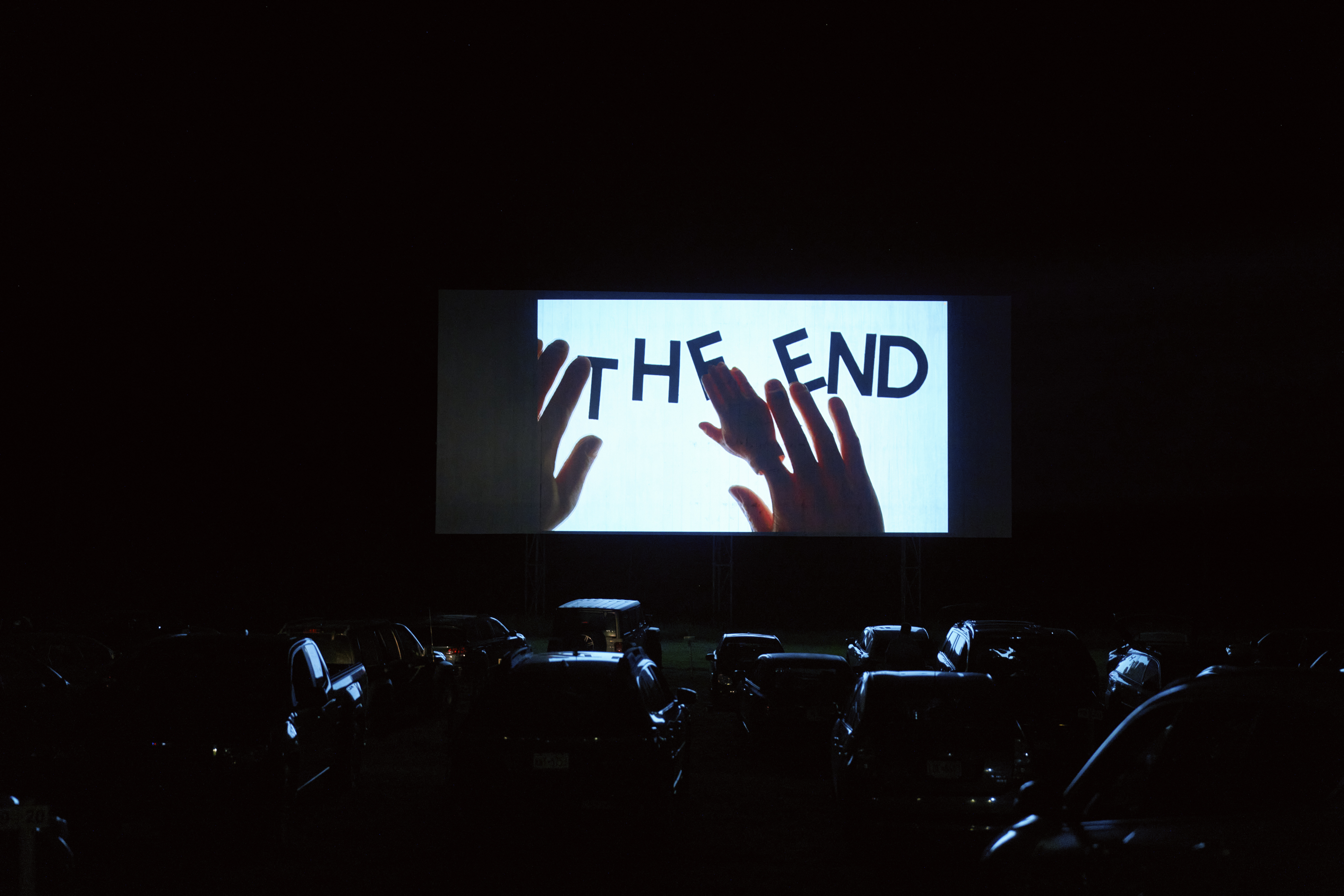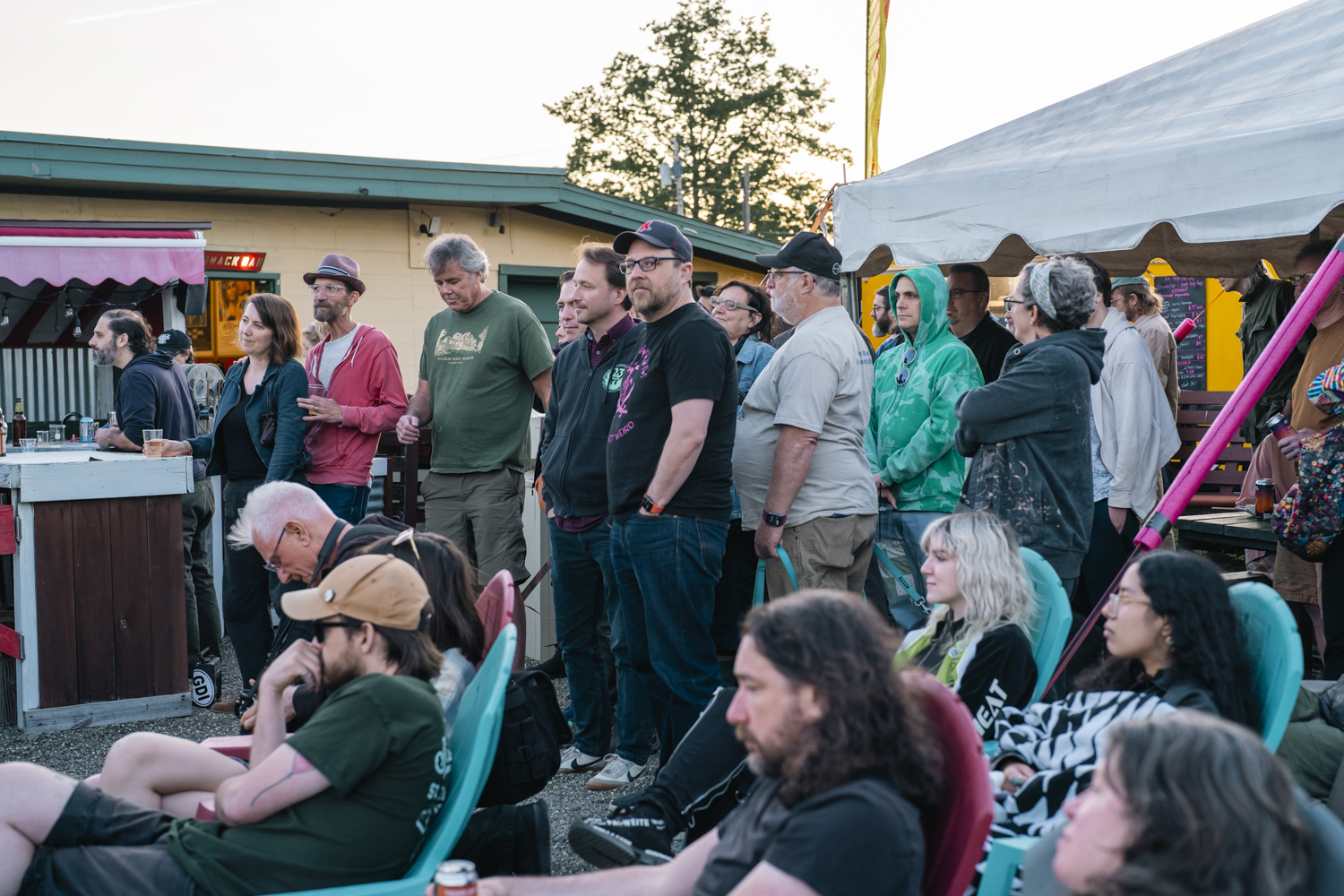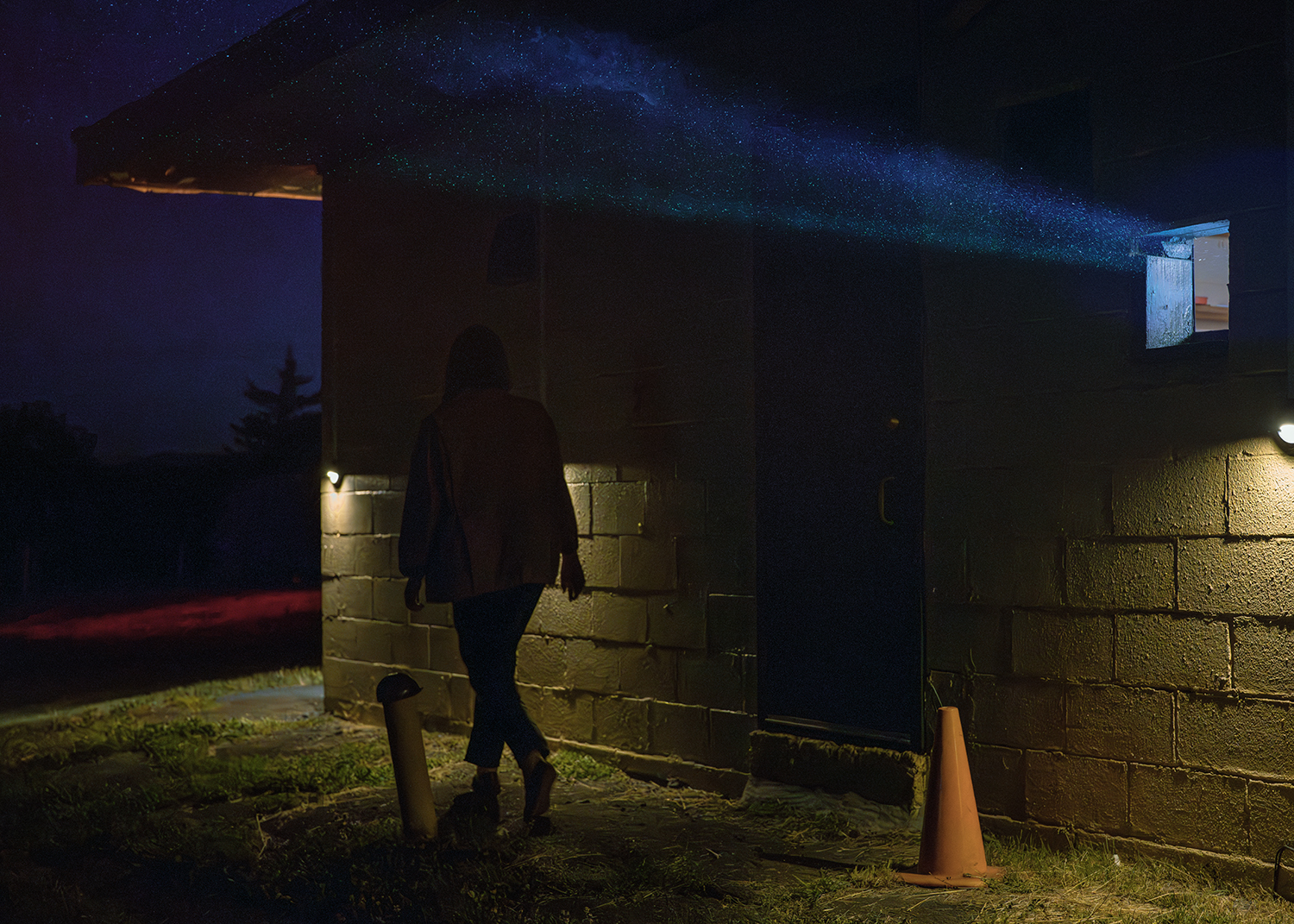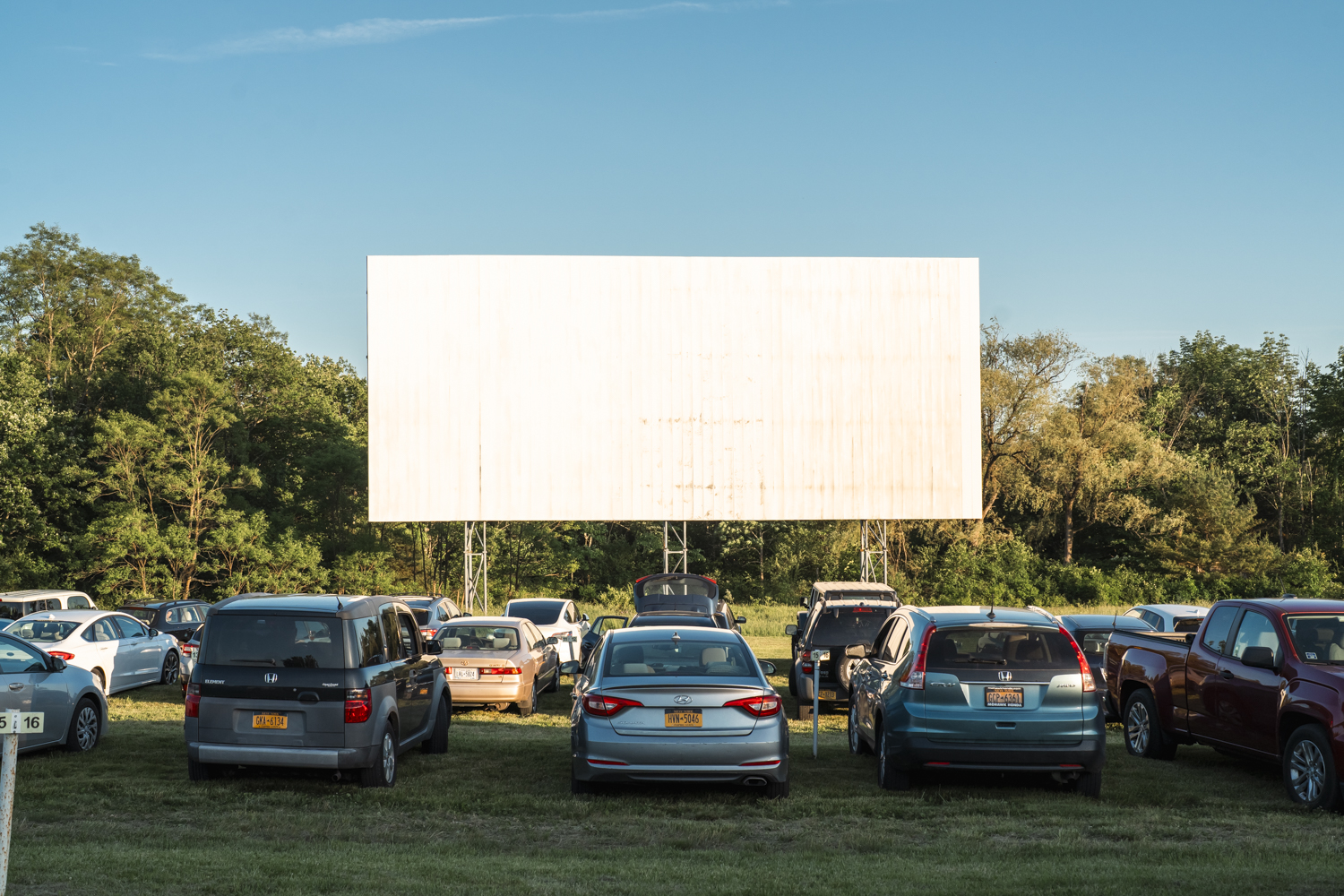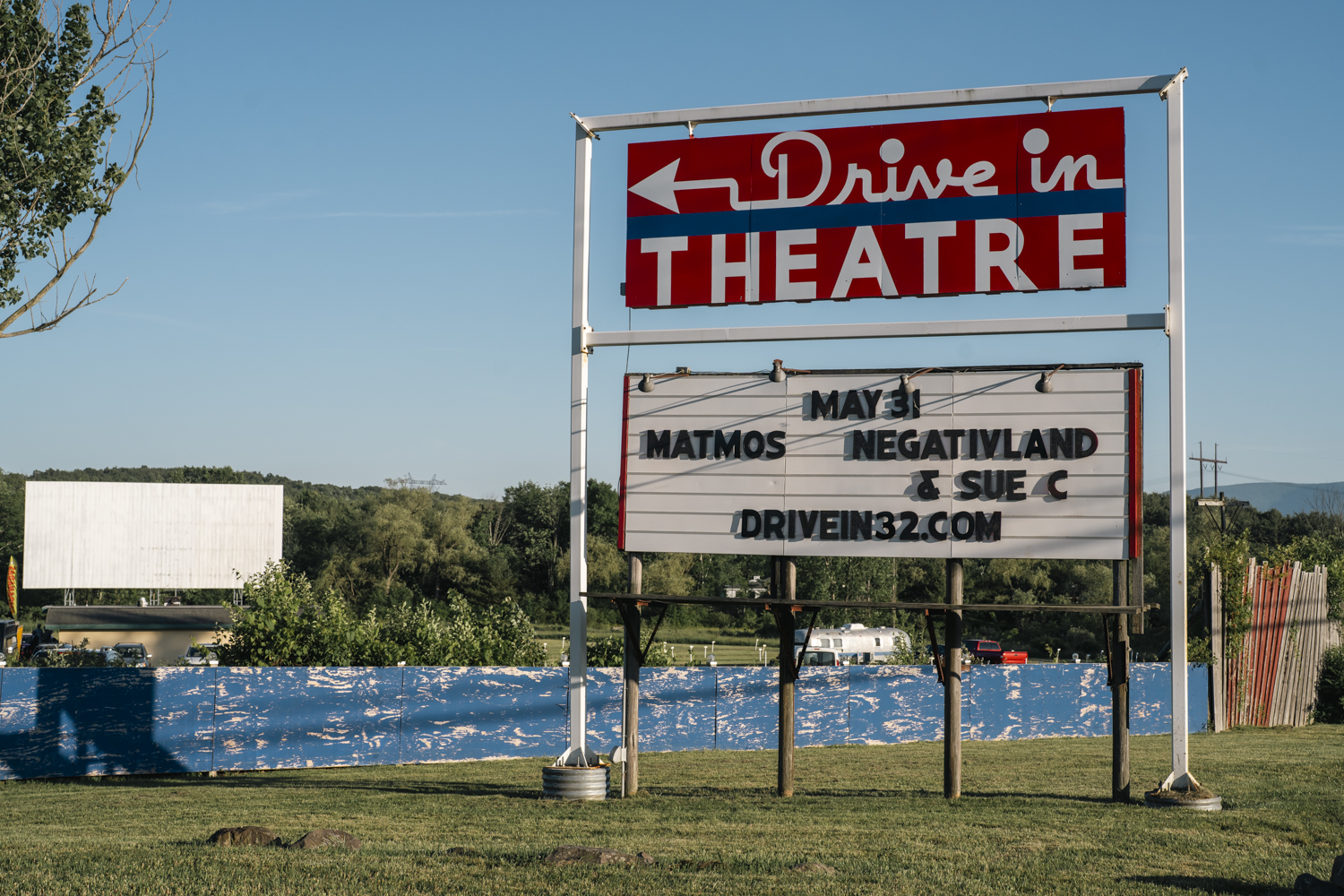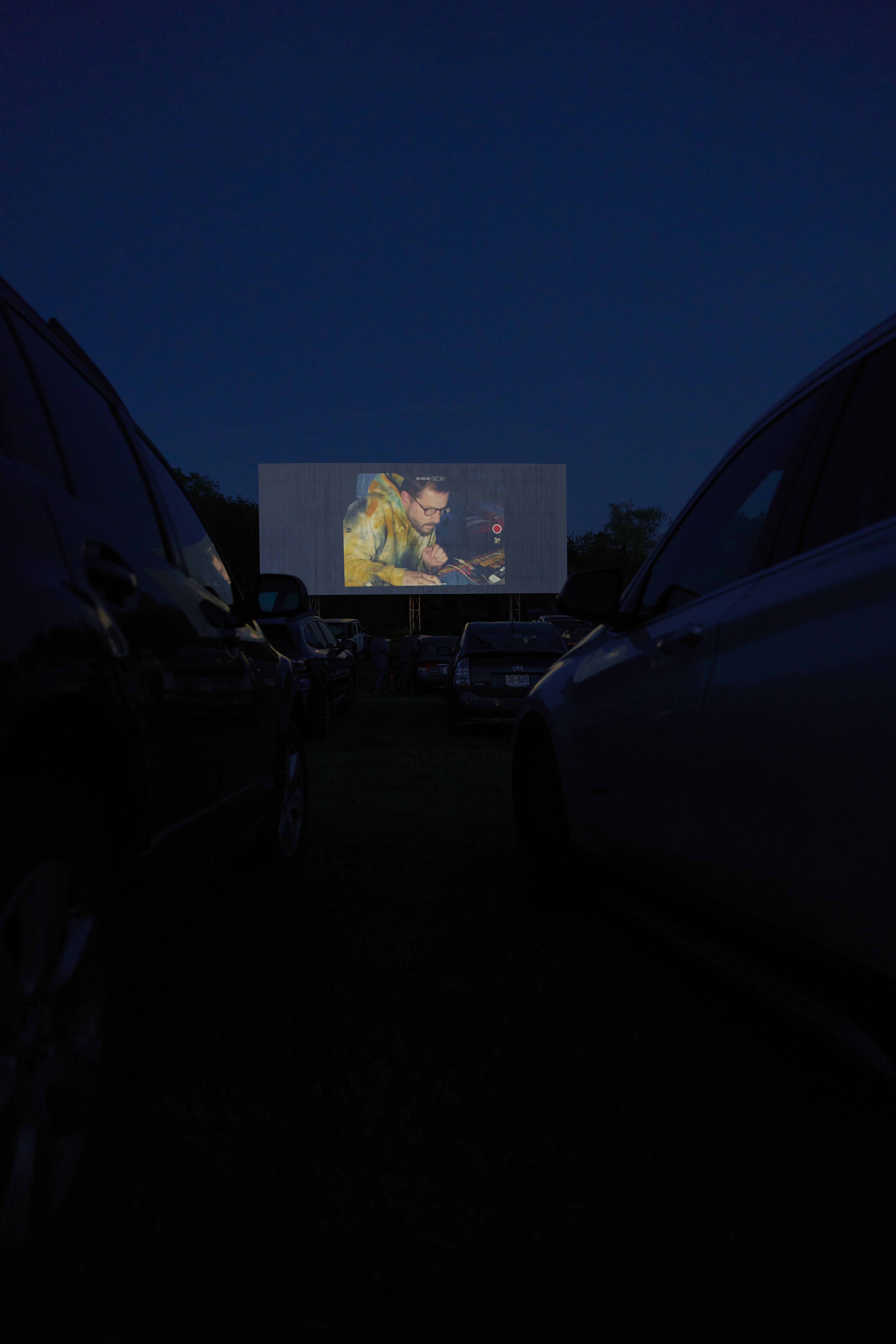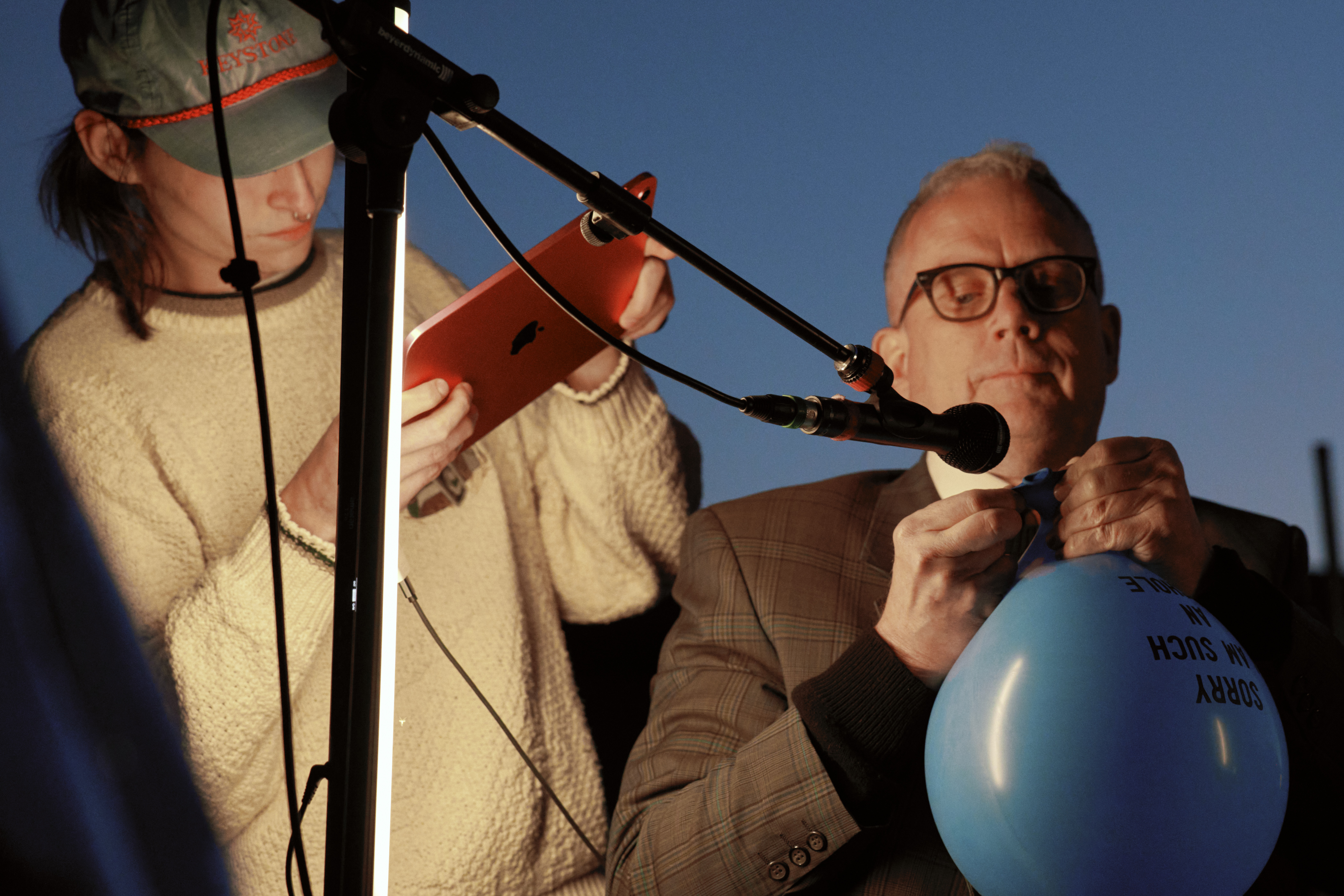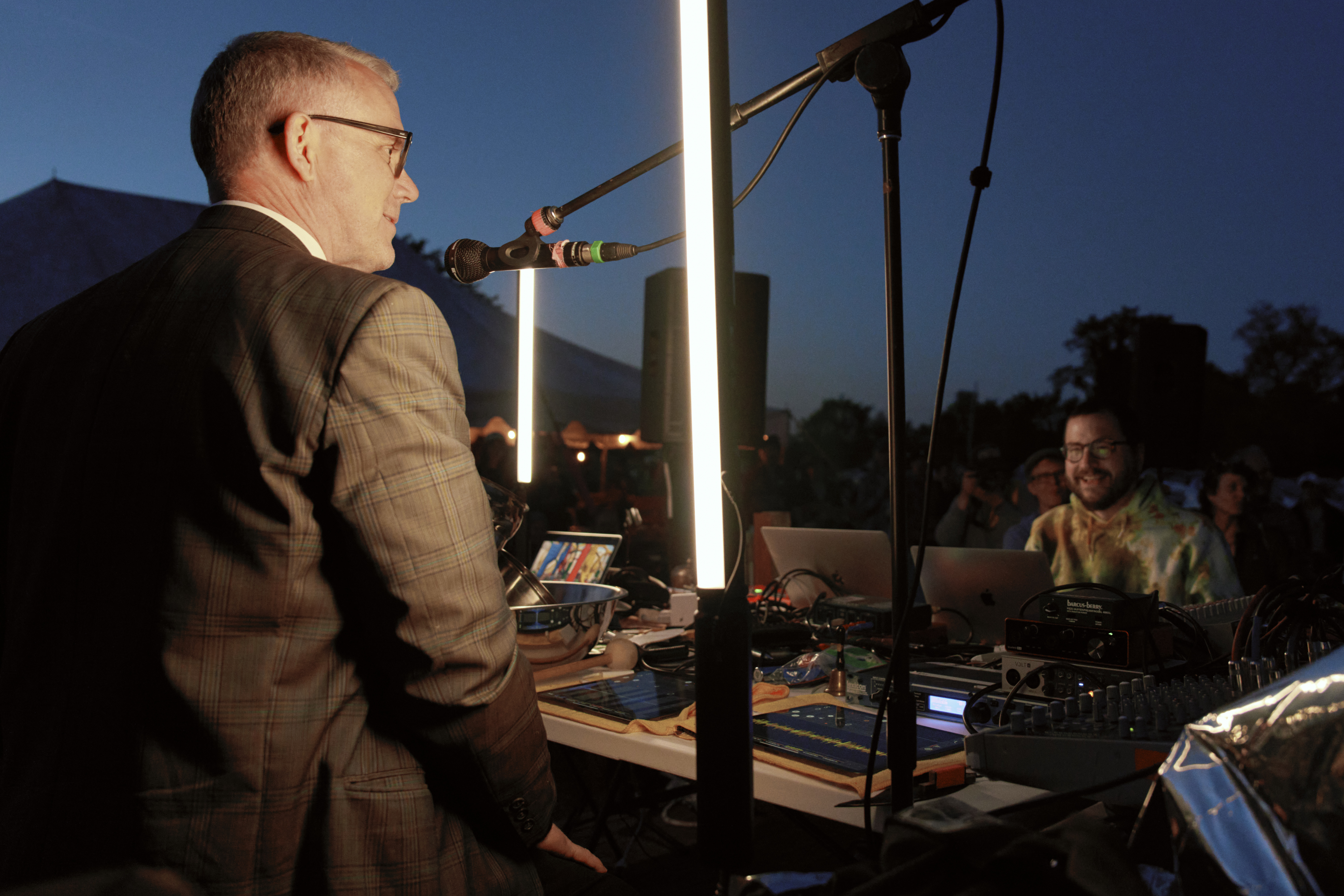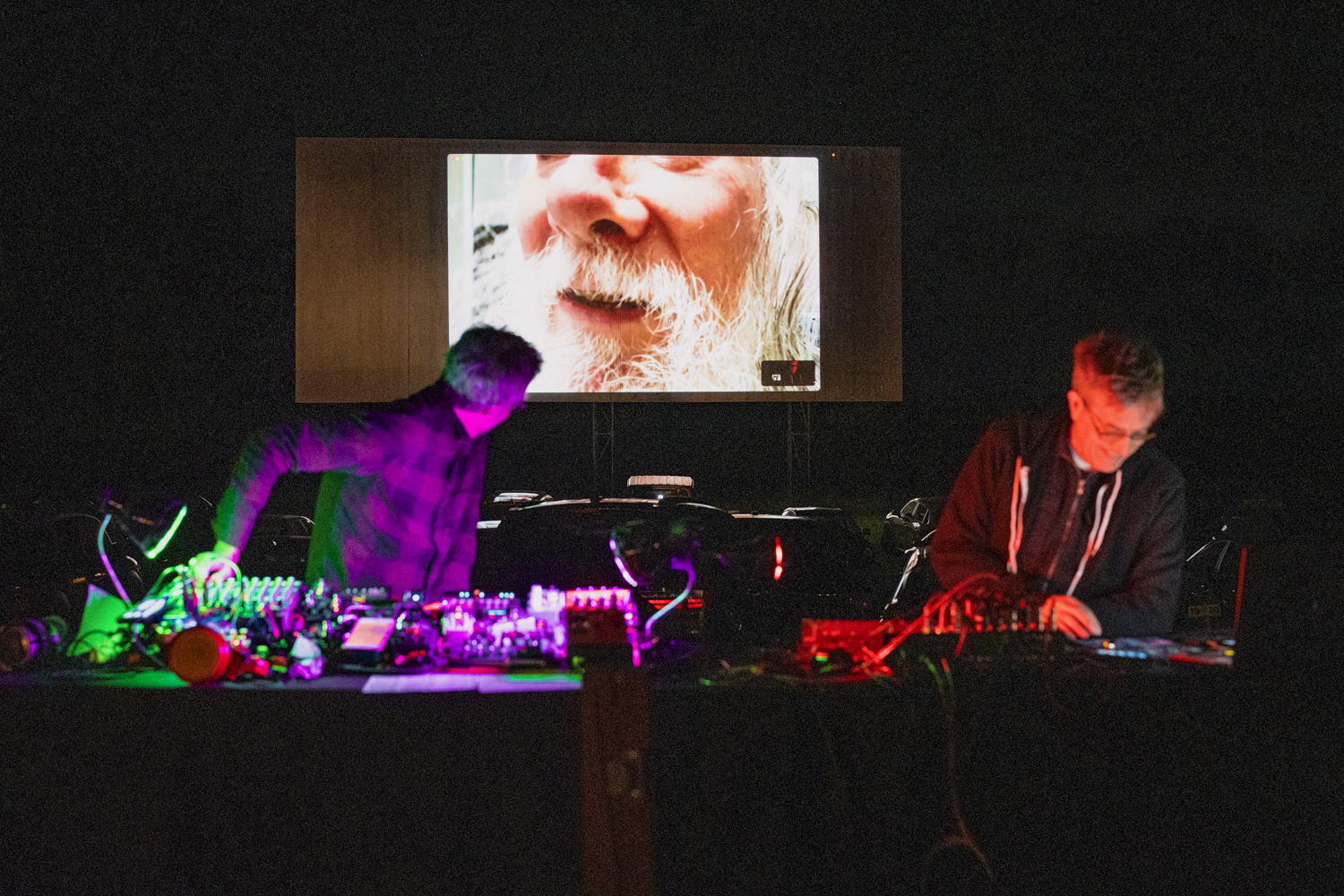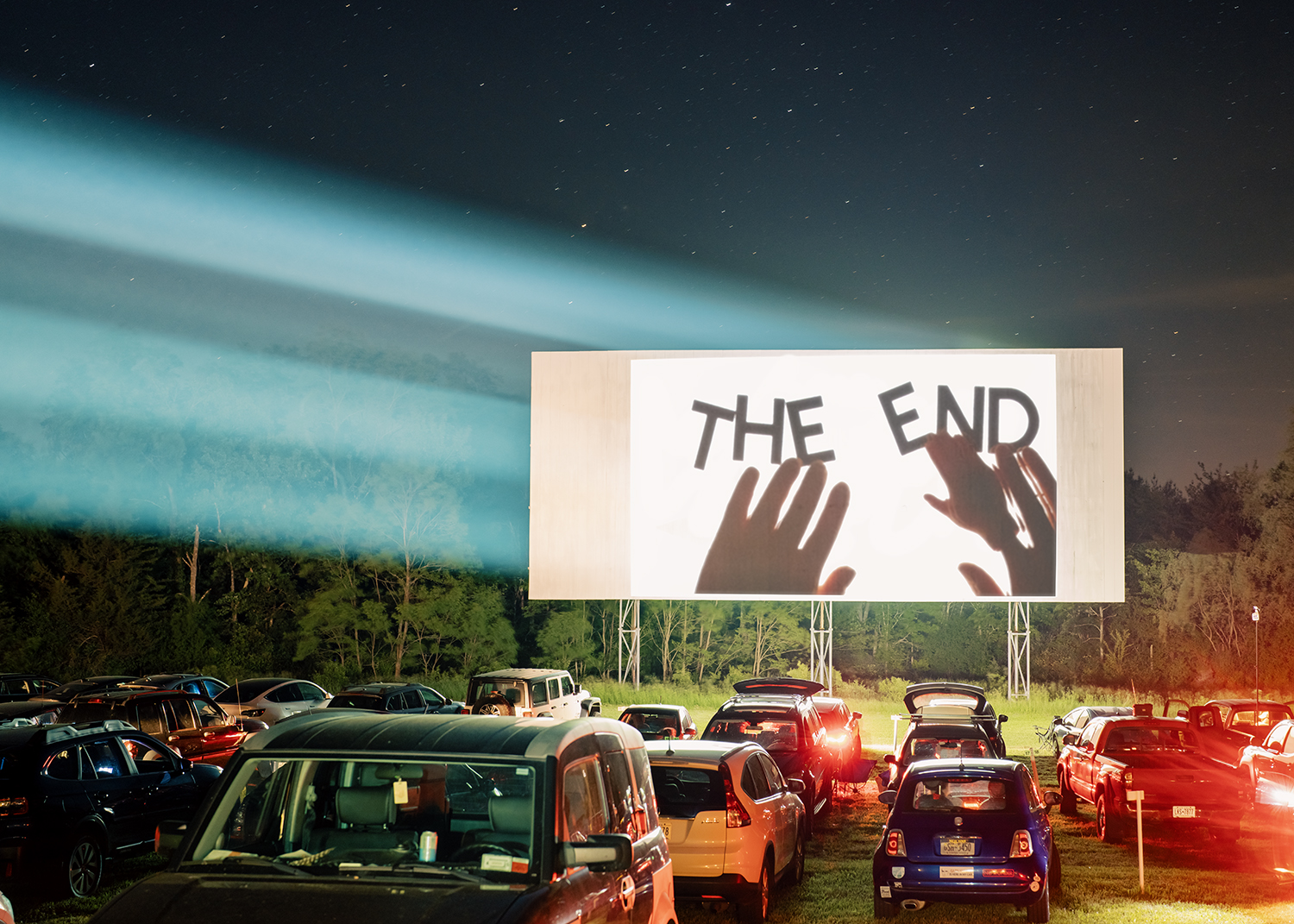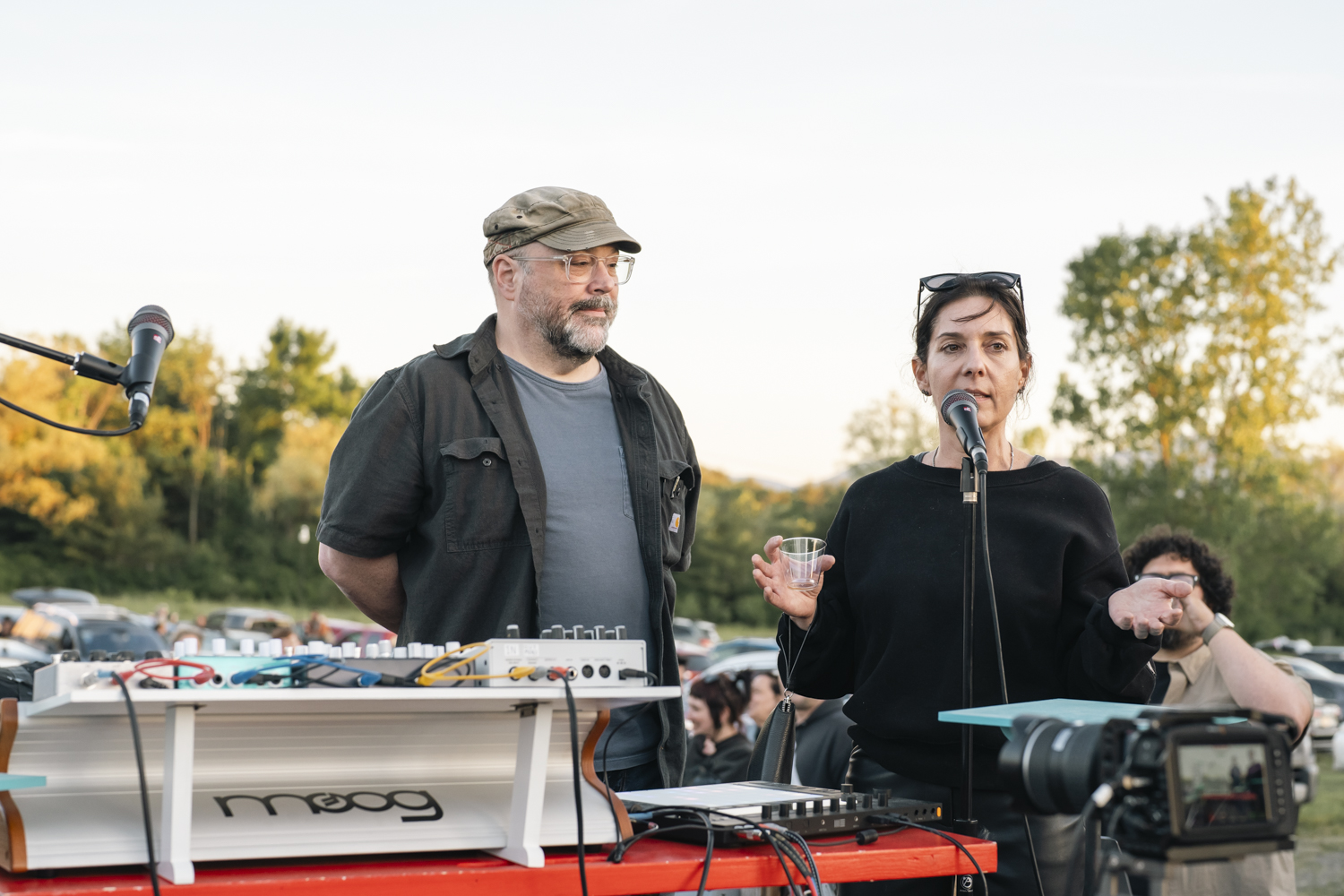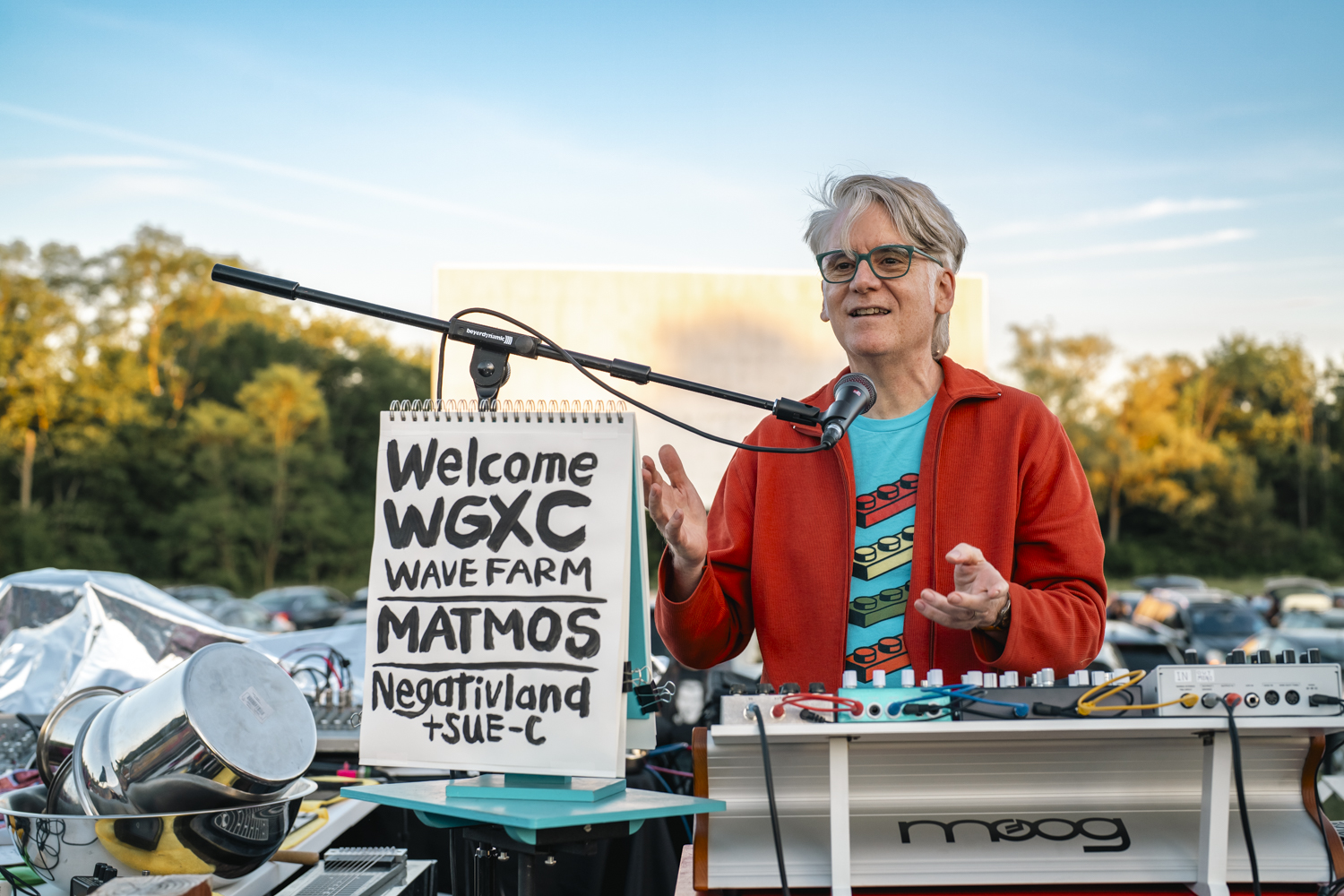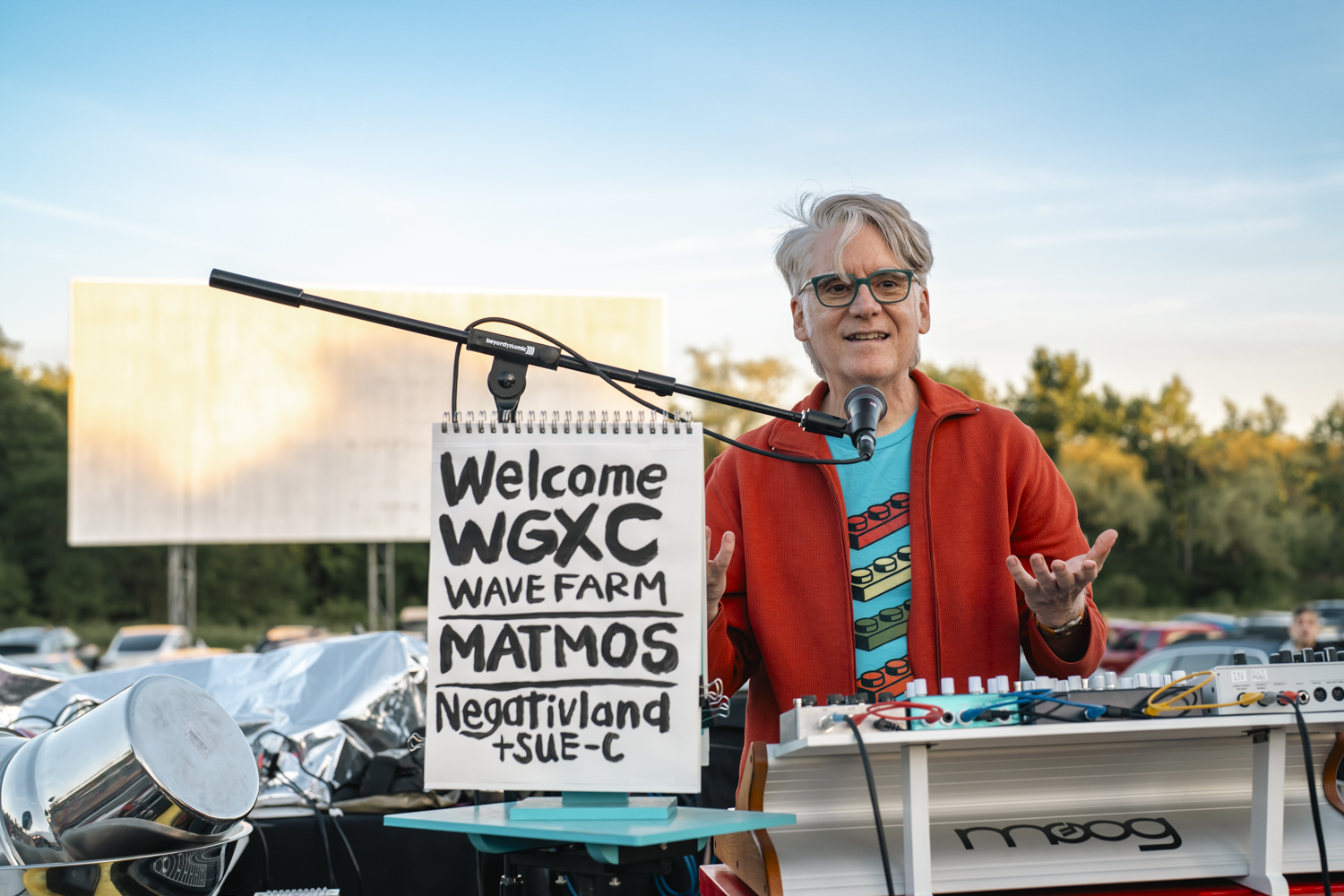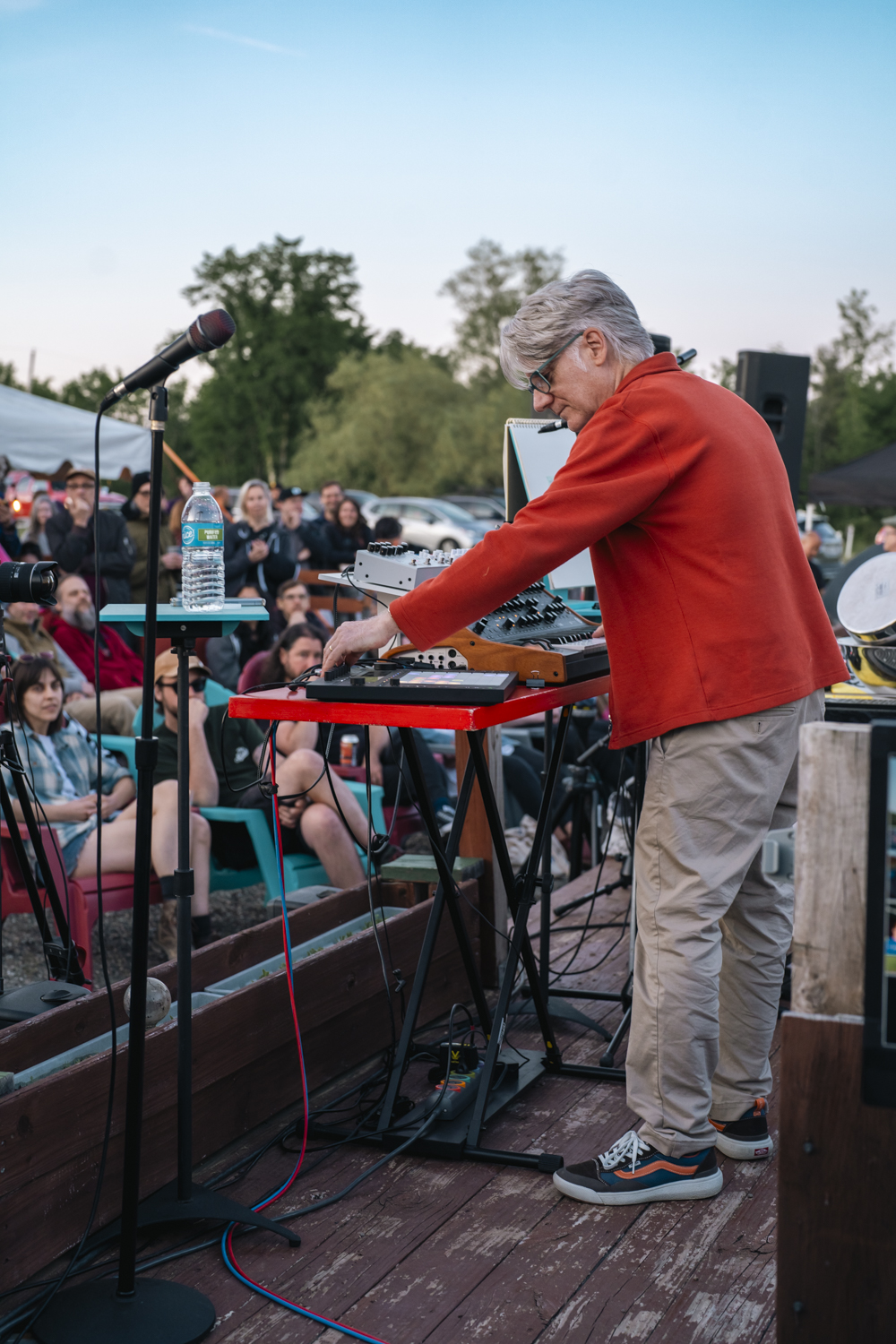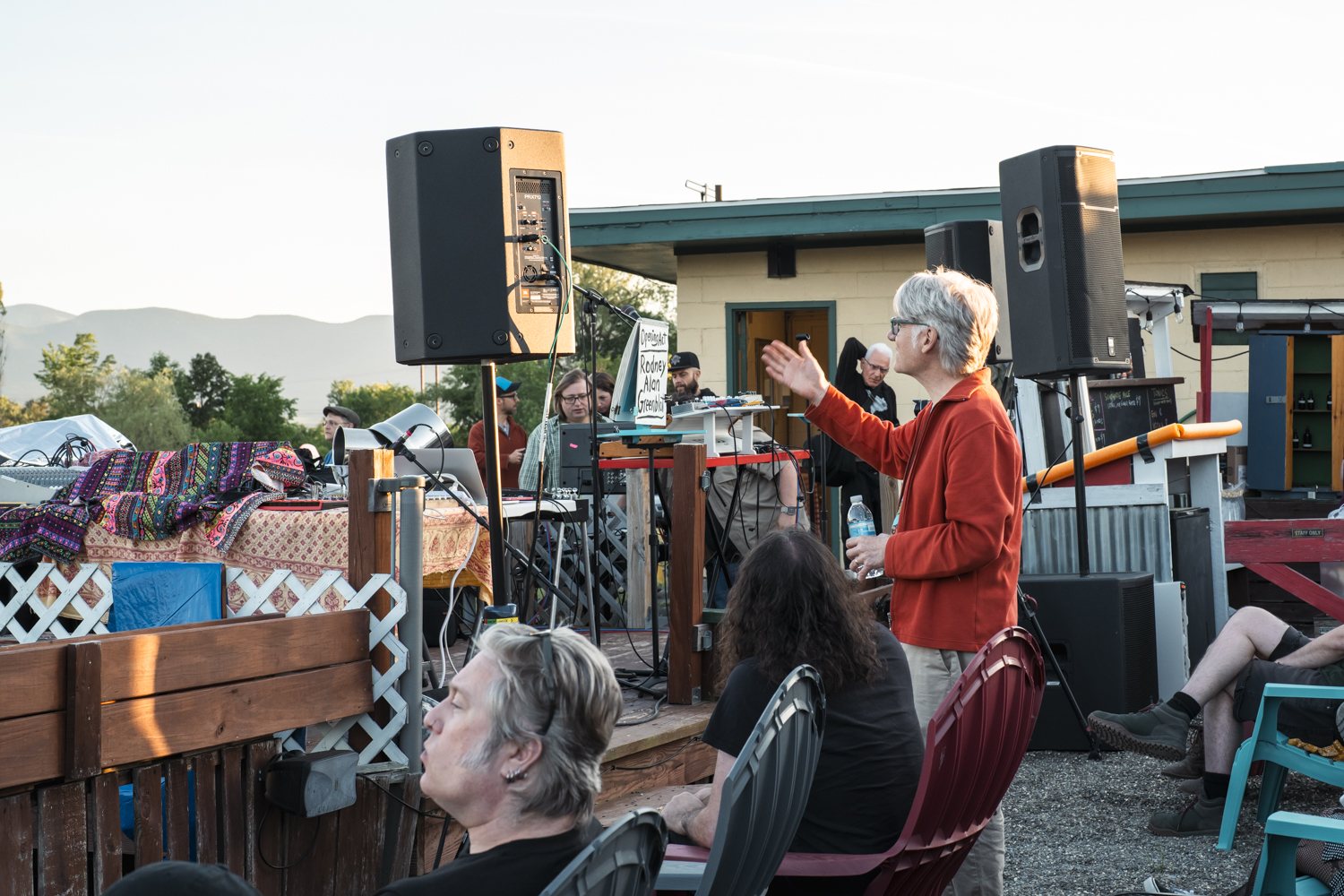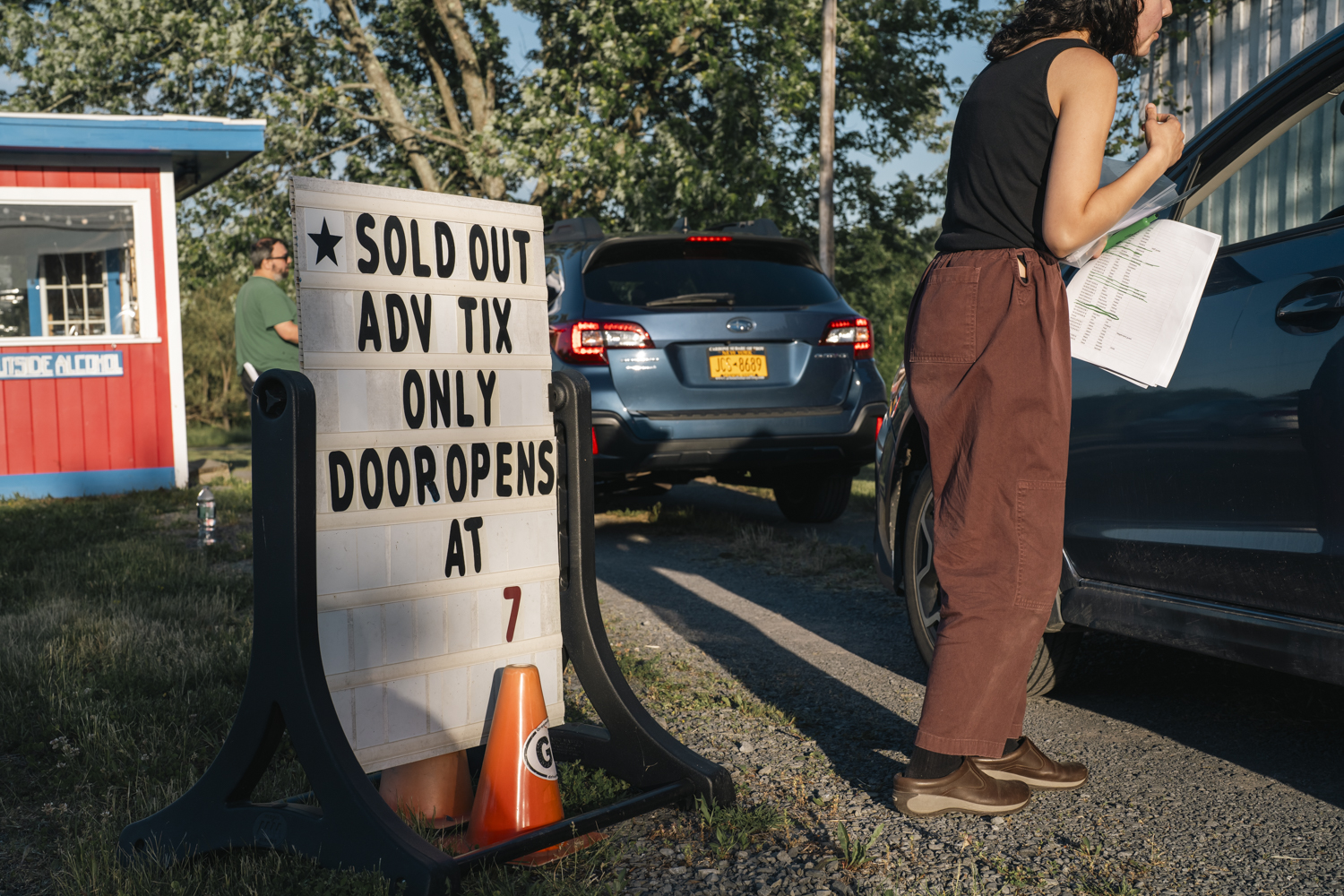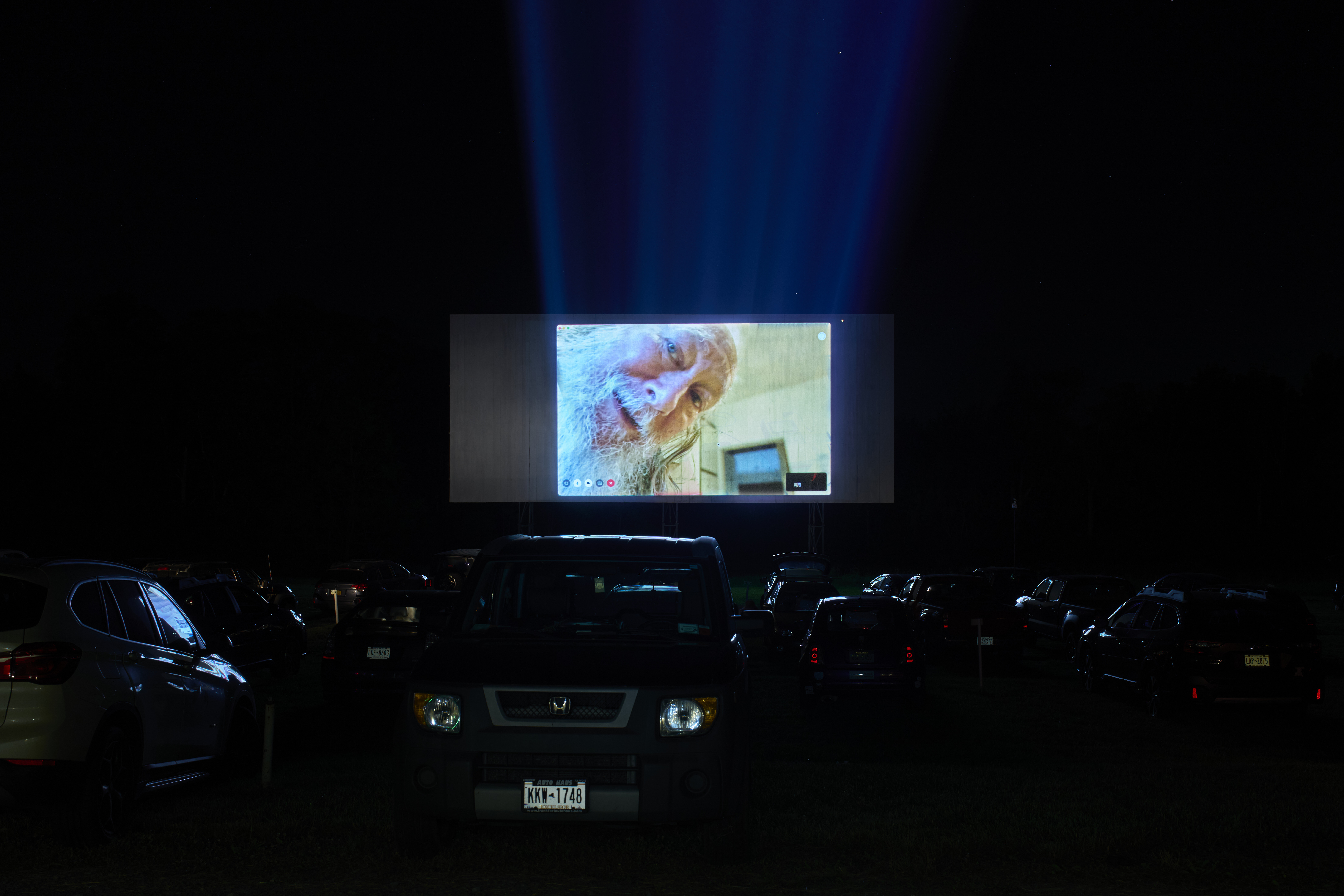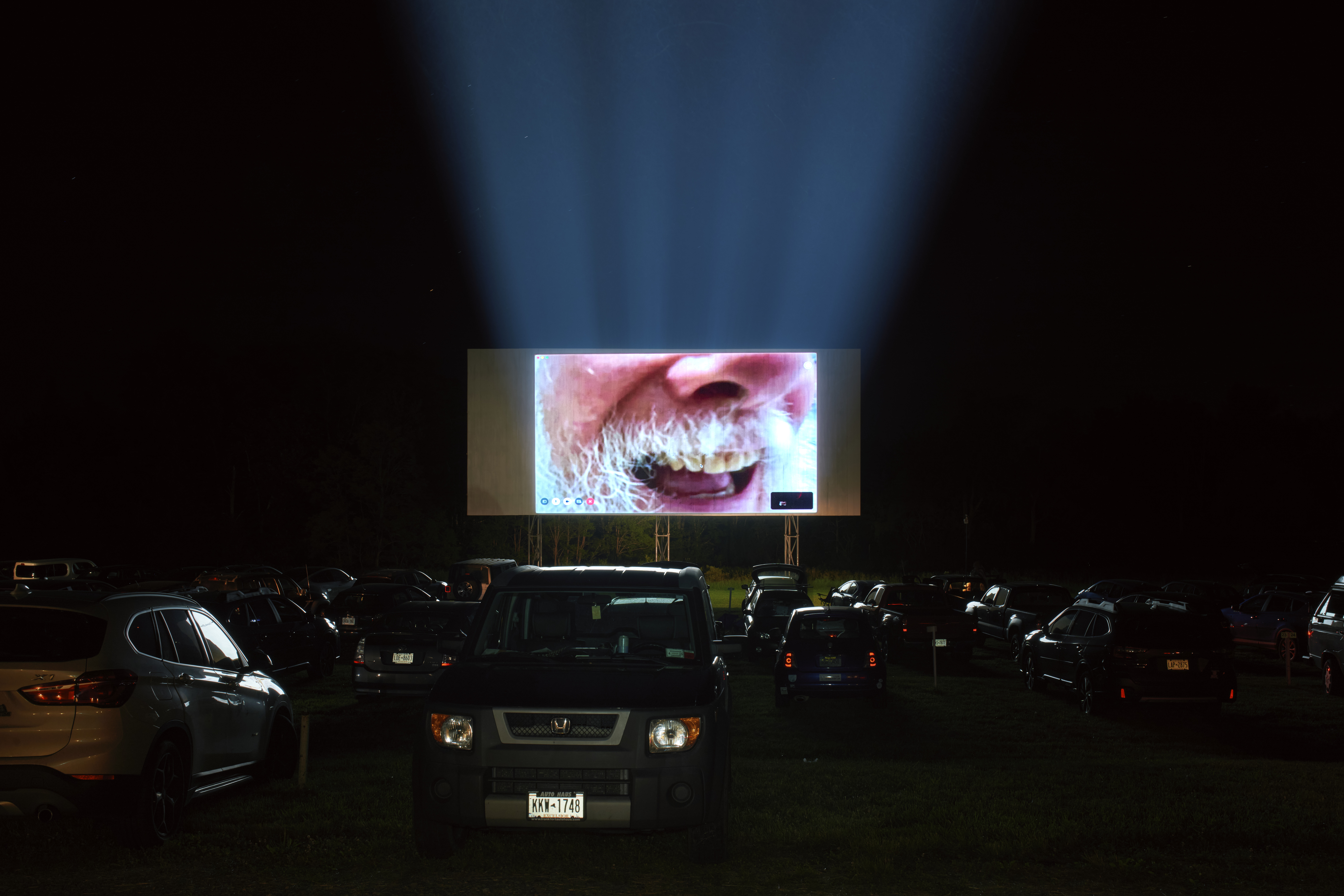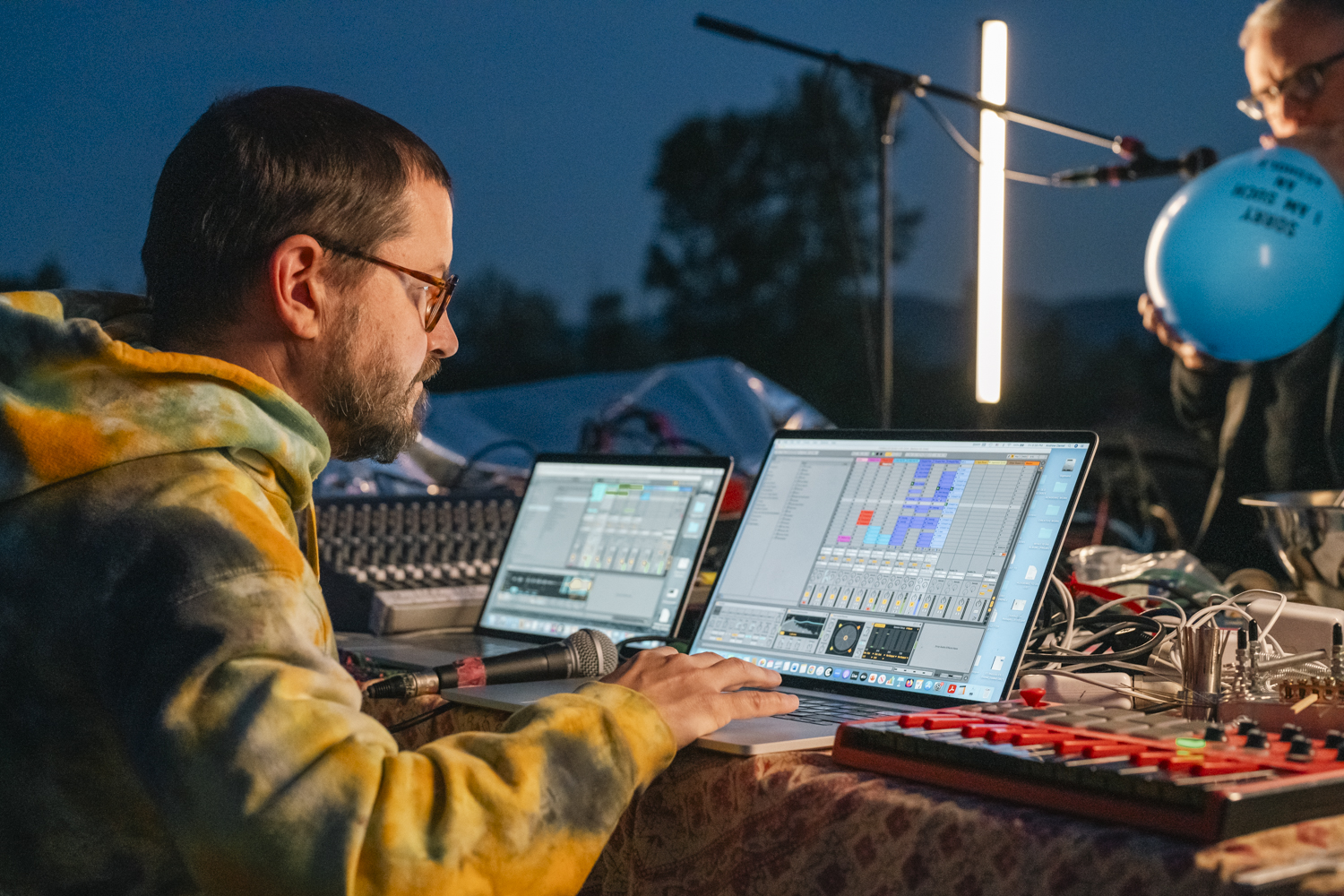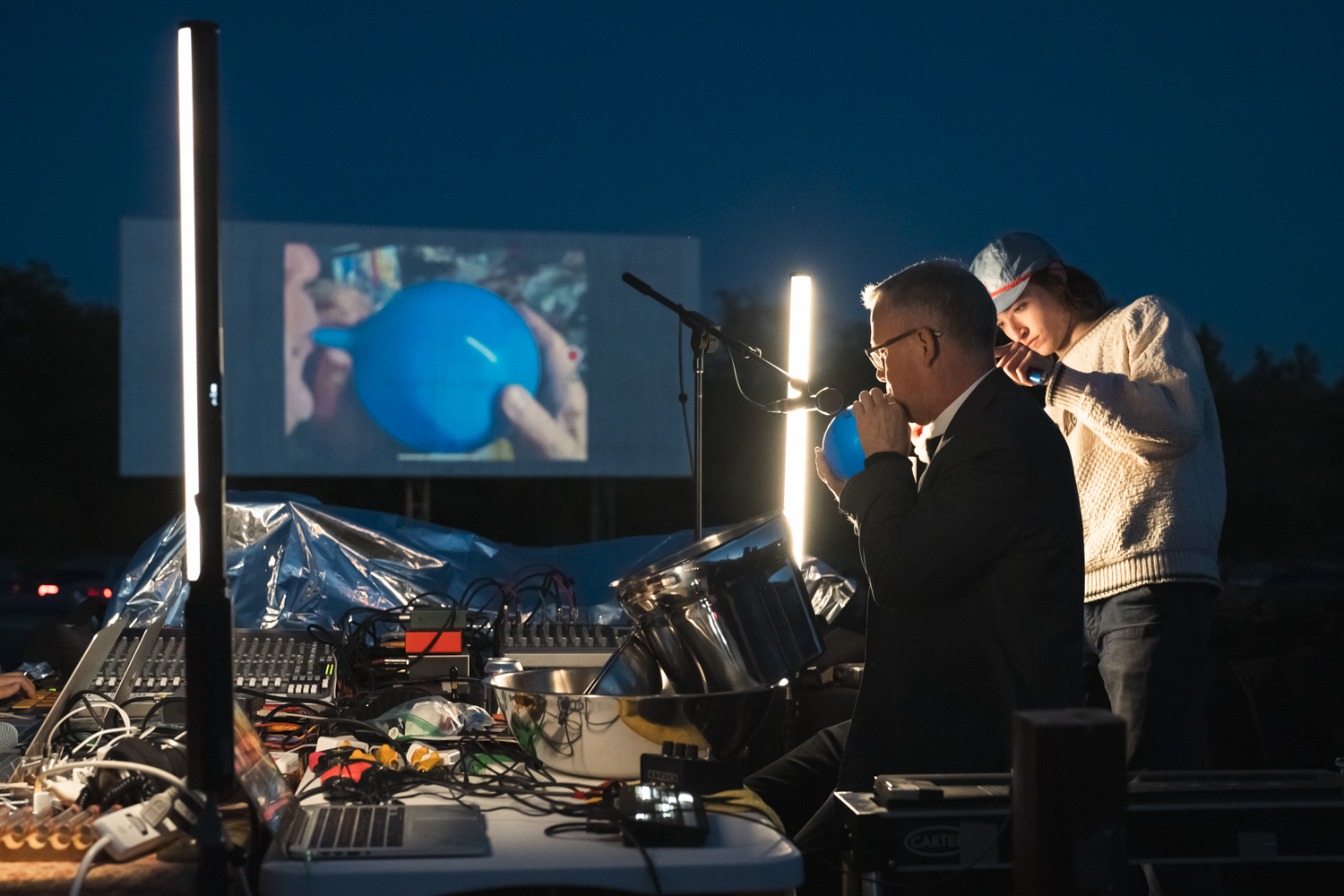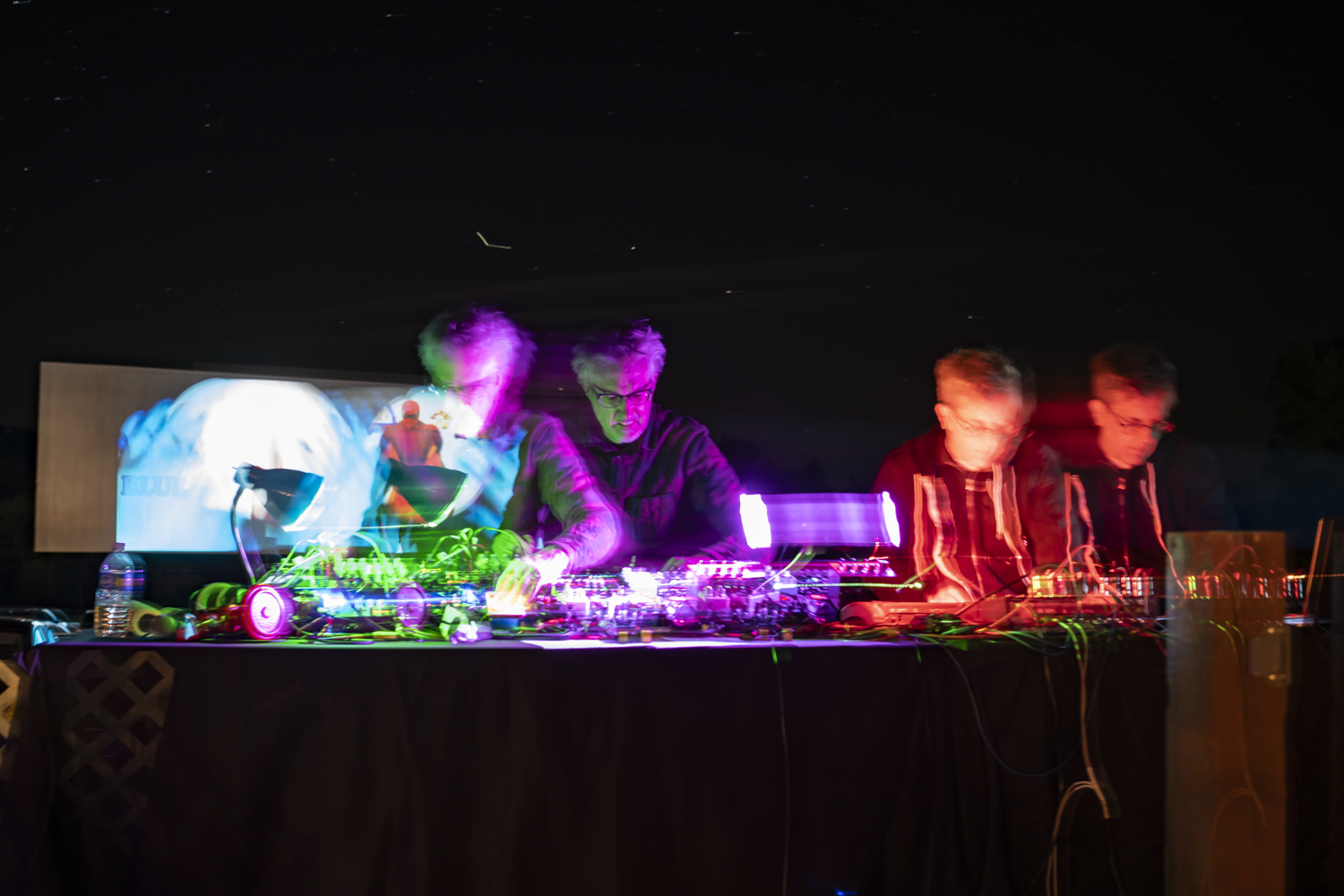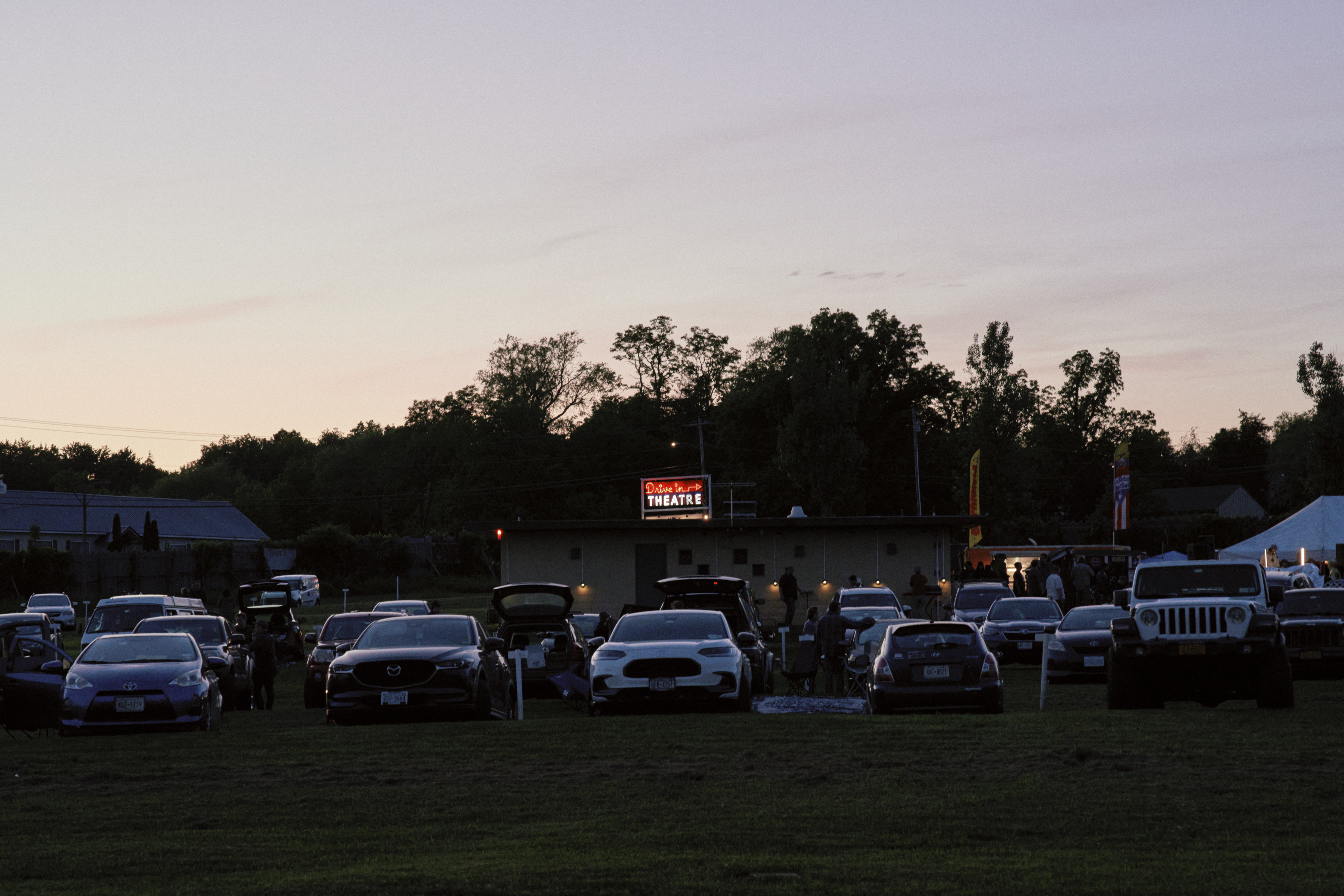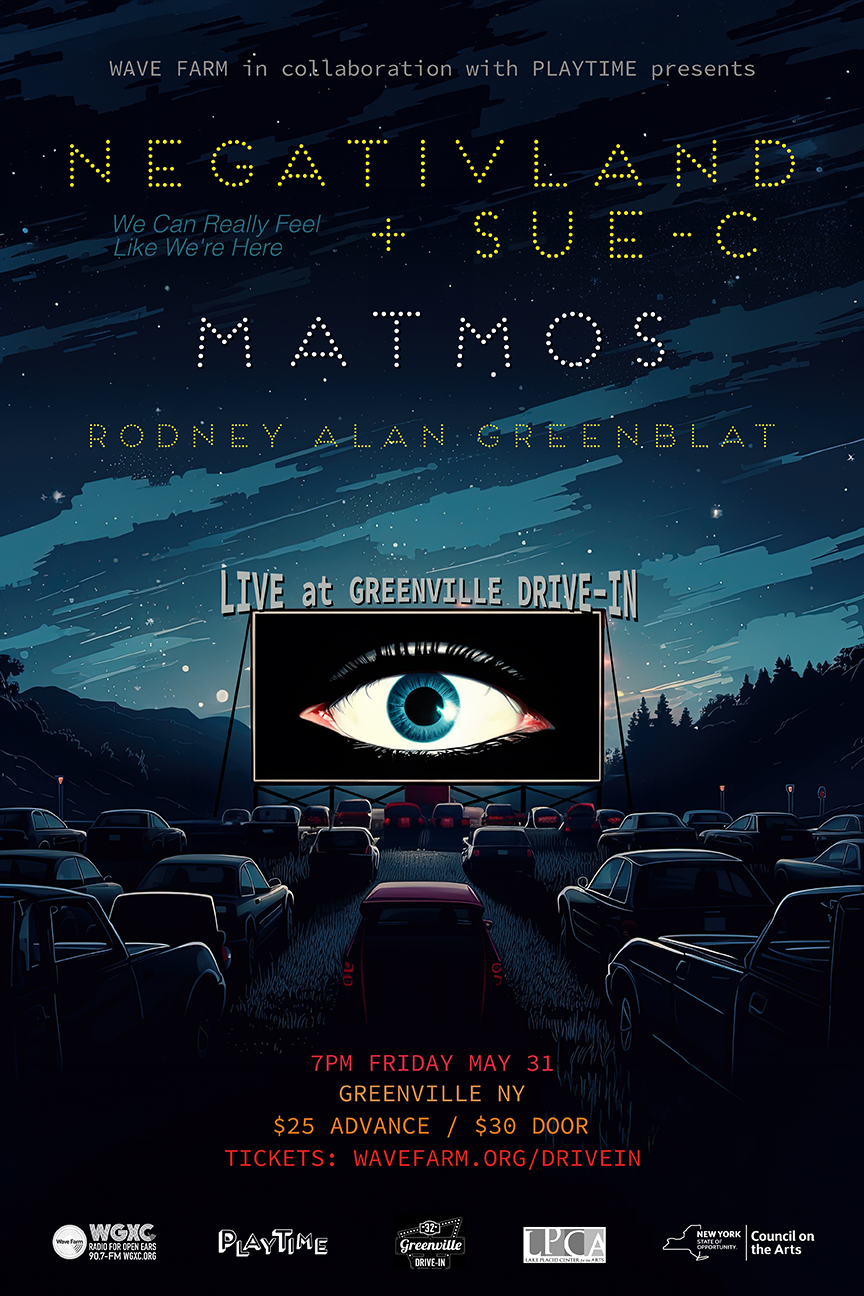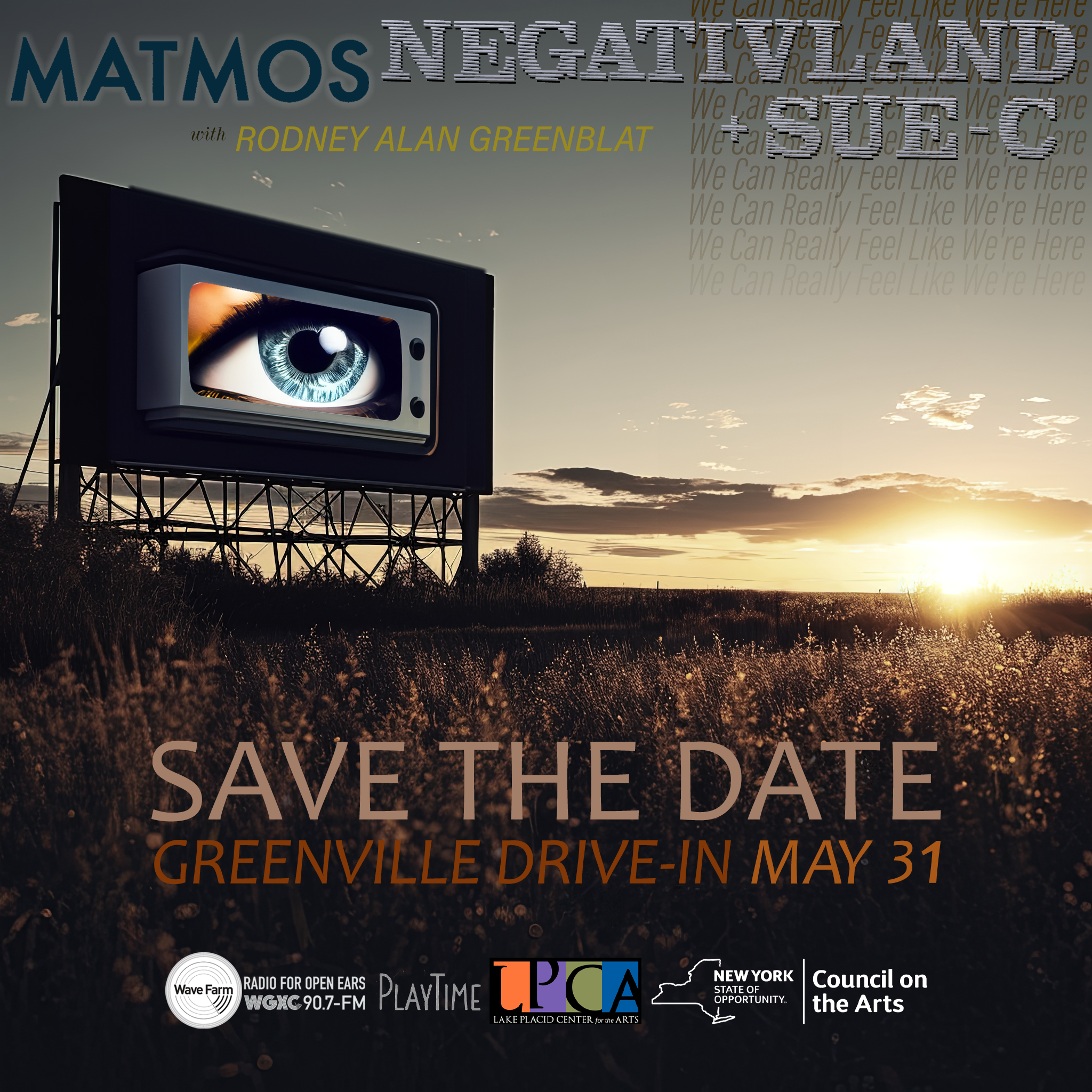WGXC-90.7 FM


Negativland + SUE-C, Matmos, Rodney Alan Greenblat
10700 Route 32 | Greenville, New York 12083 | 518.966.2177
http://drivein32.com/
This unforgettable, sold-out evening was presented by Wave Farm, produced in collaboration with PlayTime and Greenville Drive-In, and supported by The Audience Building Project, a program of the Lake Placid Center for the Arts and the New York State Council on the Arts with support from the Governor and New York State Legislature. At 8 p.m. Rodney Alan Greenblat performed in the Biergarten. Following, Matmos took the stage with audio transmitted to attendee car radios and images projected on the Drive-in’s big screen, as the sunset. Then, Negativland + Sue-C presented “We Can Really Feel Like We’re Here.” Legendary sound collage group Negativland and “real-time cinema” visual artist SUE-C’s latest audio-visual performance is about our minds, our realities, and the evolving forms of media and technology that orchestrate our perceptions as we head into our next election.
This page now hosts event archives in video, audio, photos, and text, as well as the original event listing below.
Wave Farm presents:
Negativland + SUE-C and Matmos
with Rodney Alan Greenblat opening
An unforgettable evening produced in collaboration with PlayTime and Greenville Drive-In.$25 In-advance, $30 Door
Buy Tickets Here!
WE ARE SOLD OUT
Tune in on WGXC 90.7-FM or wavefarm.org/listen from afar!- 7:00 Doors
- 8:00 Rodney Alan Greenblat performs in the Biergarten.
- 8:30 Matmos takes the stage following with audio transmitted to your car radios and images projected on the Drive-in's big screen, as the sun goes down.
- 9:45 Negativland + Sue-C present "We Can Really Feel Like We're Here." Legendary sound collage group Negativland and “real-time cinema” visual artist SUE-C collaborate to bring you their latest audio-visual performance about our minds, our realities, and the evolving forms of media and technology that orchestrate our perceptions. "An urgent show by Negativland and artist SUE-C calls time on a tech dystopia that is as malevolent as it is stupid… to meet the terrifying contemporary moment… as the world slides incrementally into meltdown.” - The Wire Magazine
Food and Libation
- Beverages at the Projectionists Club, with non-alcoholic offerings as well as beer, wine, and cocktails. Special Event Cocktail: the Marconi Wireless!
- Half Moon Pizza: Cheese, Pepperoni, Margherita, and a Special.
- La Ruta Del Sol: Ecuadorian and Puerto Rican food including Empanadas, Plantains, Tostones, Street Corn, Rice and Beans, Pork Pernil, Grilled Chicken, Shrimp Ceviche. Vegan and Gluten-free options.
About the artists:
Rodney Alan Greenblat is a musician and visual artist involved in a never-ending experiment which involves combining abstract colors, synthesizer beeps, imaginary creatures, cultural soup, introspective poetry and organized joy. https://rodneyalangreenblat.bandcamp.com.
Matmos Based in Baltimore, Matmos is Drew Daniel and M.C. Schmidt. The two have been making music as Matmos since 1997, first in San Francisco, and then relocating to Baltimore in 2007 when Daniel began to teach at Johns Hopkins University. They are respected, innovative auteurs in the world of electronic music and sampling culture whose very first album was hailed as “entering electronics Valhalla” by the WIRE magazine for sampling highly unusual sound sources such as the amplified nerve tissue of crayfish. Ever since, they have made music out a wildly heterogeneous set of objects and sources, including the sound of the pages of bibles turning, water hitting copper plates, liposuction surgery, cameras and VCRs, chin implant surgery, contact microphones on human hair, rat cages, tanks of helium, a cow uterus, human skulls, snails, cigarettes, cards shuffling, laser eye surgery, whoopee cushions, balloons, latex fetish clothing, rhinestones, Polish trains, insects, life support systems, inflatable blankets, rock salt, solid gold coins, the sound of a frozen stream thawing in the sun, a five gallon bucket of oatmeal, snails interrupting the path of a laser and altering the pitch of a light sensitive theremin, a PVC police riot shield, silicon breast implants, and their own washing machine. These raw materials are manipulated into surprisingly accessible forms, and often supplemented by traditional musical instruments played by internationally celebrated guest musicians from their circle of friends and collaborators. The result is a model of electronic composition as a relational network that connects sources and outcomes together; information about the process of creation activates the listening experience, providing the listener with entry points into sometimes densely allusive, baroque recordings that have the direct sensory immediacy of pop music. http://vague-terrain.com.
Negativland Since 1980, the multimedia collective known as Negativland have been creating records, CDs, video, fine art, books, radio and live performance using appropriated sounds, images, objects, and text. Mixing original materials and original music with things taken from corporately owned mass culture and the world around them, Negativland re-arrange these found bits and pieces to make them say and suggest things that they never intended to. In doing this kind of cultural archaeology and "culture jamming" (a term they coined way back in 1984), Negativland have been sued twice for copyright infringement. Their art and media interventions pose both serious and silly questions about the nature of sound, media, technology, control, ownership, propaganda, power, and perception in the United States of America. Their work is now referenced and taught in many college courses in the US, has been written about and cited in over 150 books and legal journals, and they sometimes lecture about their work in the USA and in Europe. https://negativland.com.
SUE-C Sue Slagle (SUE-C) is an award-winning artist, engineer and educator whose work in “real time cinema” presents a new, imaginative perspective on live performance. Her performances blend cinema and technology into an organic, improvisational and immersive act, created from live cameras, light pads and video algorithms. She has always pushed the boundaries of human-computer interaction, employing emerging technologies and inventing many of her own, both through performance and tinkering with hundreds of students in her well-established teaching practice. https://www.sue-c.net.
This engagement is supported by The Audience Building Project, a program of the Lake Placid Center for the Arts and the New York State Council on the Arts with support from the Governor and New York State Legislature.
Established in 1959 by Peter Carelas, the Greenville Drive-In has been a social fixture and destination in the Northern Catskills for over six decades. The drive-in was revived and re-imagined after a brief period of transition by Dwight Grimm and Leigh Van Swall in 2015. 'Cinema with a Twist' in the New York's scenic Northern Catskills. Movies, music, cocktails and more in the Northern Catskills of New York. https://drivein32.com.
PlayTime is an evolving entity dedicated to presenting unlikely music, film and media events in New York's Hudson Valley.
Wave Farm is an international transmission arts organization driven by experimentation with the electromagnetic spectrum. We cultivate creative practices in radio and support artists and nonprofits in their cultural endeavors. Based in New York’s Upper Hudson Valley, Wave Farm is a media arts center, media platform, and arts service organization. Wave Farm offers interdisciplinary outdoor installations, residencies and fellowships, and a research library. We operate FM radio station WGXC and host many online radio channels. Wave Farm provides fiscal sponsorship, consultation, and grants to artists and organizations.https://wavefarm.org.



